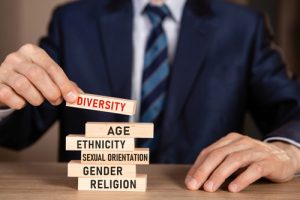When people think of “diversity and inclusion” (D&I), invariably their minds immediately go to racial and ethnic identity, with gender likely coming in a relatively close second. Indeed, both the presence and the inclusion of women and people of color represent key elements of any D&I strategy; however, the diversity of human beings spans far more than just these two dimensions. 
Diversity Extends Beyond Race/Gender
On September 20, 2021, The McKenzie Delis Foundation, a charitable organization, committed to moving the dial on diversity, equity, inclusion, and belonging in the workplace, and Ipsos, the third-largest market research company globally, announced the launch of the first-ever comprehensive review of corporate practices against 10 facets of workplace D&I—the 2021 McKenzie-Delis Review on Diversity and Inclusion, which will provide an expanded understanding of D&I
If 10 facets sound like an awful lot of diversity elements, it may be a sign you haven’t spent enough time thinking about diversity. That’s a problem for businesses, as diverse and inclusive companies consistently outperform those lacking in these areas.
Focusing on 10 Facets of Workplace D&I
The 10 facets included in the McKenzie Delis review include:
- Gender
- Race and ethnicity
- Sexual orientation
- Disability
- Age and generation
- Religion or belief
- Nationality
- Socioeconomic status
- Mental health
- Parenthood
Each of these facets represents a way that human beings and the labor force exhibit their diversity. They contribute to differences in experiences, insights, upbringing, values, and ways of looking at the world.
D&I is a relatively new concept to many companies, and organizations across the country are still playing catch-up on their D&I initiatives. It’s understandable that many businesses and talent managers continue to view D&I through the narrow lenses of race and gender, but if companies want to truly realize the very real benefits of a diverse and inclusive workforce, it’s essential they understand the myriad ways human beings and, consequently, the labor force represent their inherent diversity.
